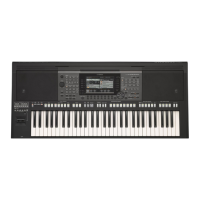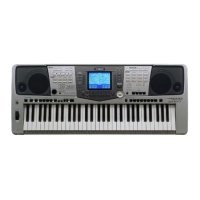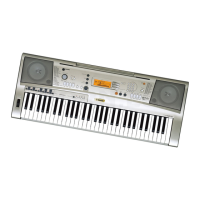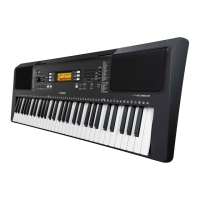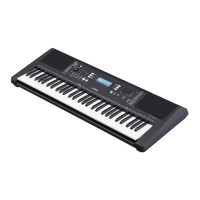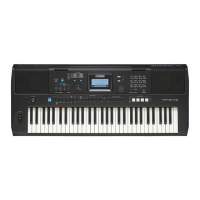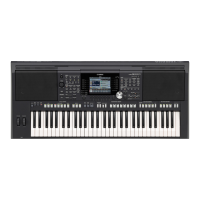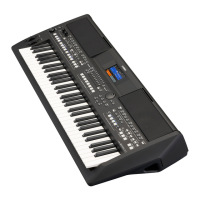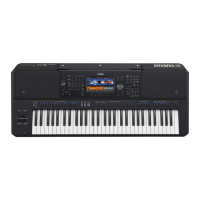PSR-A5000 Reference Manual 27
1
Styles
Target Ch Select the target channel to be edited. All items with the exception of “Groove” are to be applied to the channel
specified here.
Groove This lets you add swing to the music or change the “feel” of the beat by making subtle shifts in the timing
(clock) of the Style. The Groove settings are applied to all channels of the selected Section.
Original Beat Specifies the beats to which Groove timing is to be applied. In other words, if “8 Beat” is
selected, Groove timing is applied to the 8th notes; if “12 Beat” is selected, Groove timing is
applied to 8th-note triplets.
Beat Converter Actually changes the timing of the beats (specified in the “Original Beat” parameter above)
to the selected value. For example, when Original Beat is set to “8 Beat” and Beat Converter
is set to “12,” all 8th notes in the section are shifted to 8th-note triplet timing. The “16A” and
“16B” Beat Converter which appear when Original Beat is set to “12 Beat” are variations on
a basic 16th-note setting.
Swing Produces a “swing” feel by shifting the timing of the back beats, depending on the “Original
Beat” parameter above. For example, if the specified Original Beat value is “8 Beat,” the
Swing parameter will selectively delay the 2nd, 4th, 6th, and 8th beats of each measure to
create a swing feel. The settings “A” through “E” produce different degrees of swing, with
“A” being the most subtle and “E” being the most pronounced.
Fine Selects a variety of Groove “templates” to be applied to the selected section. The “Push” set-
tings cause certain beats to be played early, while “Heavy” settings delay the timing of cer-
tain beats. The numbered settings (2, 3, 4, 5) determine which beats are to be affected. All
beats up to the specified beat—but not including the first beat—will be played early or
delayed (for example, the 2nd and 3rd beats, if “3” is selected). In all cases, “A” types pro-
duce minimum effect, “B” types produce medium effect, and “C” types produce maximum
effect.
Dynamics This changes the velocity/volume (or accent) of certain notes in the Style playback. The Dynamics settings can
be applied to each channel individually or all channels of the selected Style.
Accent Type Determines the type of accent applied—in other words, which notes are emphasized.
Strength Determines how strongly the selected Accent Type (above) will be applied. The higher the
value, the stronger the effect
Expand/
Compress
Expands or compresses the range of velocity values. Values higher than 100% expand the
dynamic range, while values lower than 100% compress it.
Boost/Cut Boosts or cuts all velocity values. Values above 100% boost the overall velocity, while values
below 100% reduce it.
Apply To All
Channels
When set to “On,” the settings in this display will be applied to all the channels of the current
Section.
When set to “Off,” the settings in this display will be applied to the channel specified at the
“Target Ch” in the “Channel Edit” display.
Quantize Same as in MIDI Multi Recording (page 74), with the exception of the two additional available parameters
below.
Velocity Boosts or cuts the velocity of all notes in the specified channel, according to the percentage specified here.
Bar Copy This function allows data to be copied from one measure or group of measures to another location within the
specified channel.
Source Top Specifies the first (Source Top) and last (Source Last) measures in the region to be copied.
Source Last
Destination Specifies the first measure of the destination location, to which the data is to be copied.
Bar Clear This function clears all data from the specified range of measures within the selected channel.
Remove Event This function lets you remove specific events from the selected channel.
The edited Style will be lost if you change to another Style or turn off the power to the instrument without carrying out the Save operation (step 7
on page 21).
Eighth notes with swing
Sixteenth notes with swing

